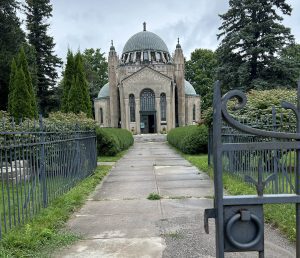
We were winding up our visit to the building just north of the Sandford Road, a structure my author friend Conrad Boyce called a “Jewel on the Hill,” when our wonderful guide took questions. The one I asked had nothing to do with the building, but everything to do with its namesake.
“What’s the story about Thomas Foster rewarding women for delivering the most babies?” I asked.
“In his will in 1945,” explained tour guide Nicole Greenly, “the recently deceased mayor of Toronto, Thomas Foster, awarded cash prizes to women who had the most babies in Toronto in the decade following his death.”
Indeed, Foster laid out the rationale for the prize based on a principle he genuinely believed in. “I approve of large families,” Foster wrote in his will, “and desire to extend some benefit to the mothers of such families.” Remember, the Second World War had just ended and with it, concern for its astronomical cost in lives.
So, with his own accumulated wealth (his estate was worth $1.2 million when he died) Foster provided for four separate contests three years apart to reward $1,000 to married women for their procreational abilities.
“The people of Toronto called it ‘the Stork Derby,’” said our guide.
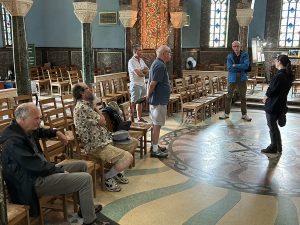
Last Friday morning, I led visitors to our community to several sites I thought they’d find out of the ordinary. Our first stop – once we’d navigated around road construction up Conc. Road 7 – was the Thomas Foster Memorial.
My guests included Mark Richardson, recently retired after 24-years’ service with the London Public Library; Mike Baker, retired curator of the Elgin County Museum; Grant Maltman, curator at the Banting House National Historic Site; Stephen Sword, historian from Stouffville; and archives coordinator at the University of Western Ontario, John Lutman, who (with a fascination for architecture) stepped inside the memorial, sat down and kept repeating, “Astounding.”
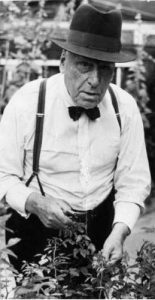
Guide Greenly told us that the Foster family had emigrated from Yorkshire, England, to the Leaskdale district in 1851; Thomas was born the next year. After 15 years in the community, he struck off on his own, apprenticing in a Toronto butcher shop, then establishing his own business and making his fortune in real estate.
In his 40s, he jumped into politics, married Elizabeth McCauley and soon after welcomed daughter Ruby into the world. By 1925, he’d been elected mayor of Toronto on a campaign that promised ratepayers, “economy (will be) our watchword.” But his frugality was his undoing. “Honest Tom” lost his campaign for re-election in 1928 and never ran for public office again.
Author Boyce points out in his book Jewel on the Hill that with both his wife and child deceased by 1929, for Thomas Foster “travelling the world became an obsession … and one of the most beautiful sights he saw was the Taj Mahal in Agra, India,” built by the emperor to honour his wife. “The idea of building something similar beside the family burying ground near Leaskdale was born.”
Engaging architects James Craig and Henry Madill, as well as masons, stone carvers, marble and mosaic artisans and local labourers, Foster budgeted $100,000 to build his mausoleum; in fact, costs mushroomed to $250,000 ($15 million in value today). Some called it “Foster’s Folly,” but at the memorial’s dedication in 1936, Foster said merely he wanted “to make a more pleasant place to view the last resting place” of his wife Elizabeth and daughter Ruby.
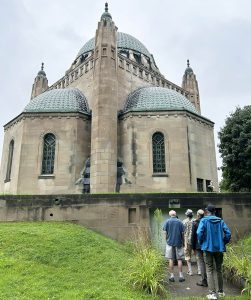
More than that, Uxbridge Township saw its potential, as did the volunteer caretakers Friends of the Thomas Foster Memorial and by 1992 it had become township owned, opening its doors to funerals, concerts, Remembrance Day observances, and often a photo opportunity for local wedding parties.
“Those marble panels in the floor look as if they lead somewhere,” one of my naturally curious guests noted.
“Back in the day, if it was a winter funeral and a grave couldn’t be dug,” Nicole Greenly pointed out, “the body could be lowered into the basement for temporary cold storage. … Want to see downstairs?”
And off we went to discover more of the mysteries under our feet.
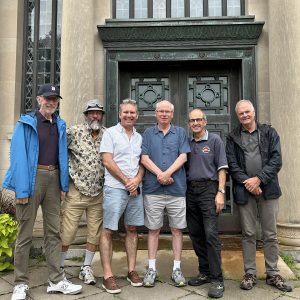
Just nine years after its unveiling in 1936, Thomas Foster’s body was entombed in the South Recess of the memorial alongside his family. In 1945, he’d bequeathed $80,000 for the building’s maintenance (which ran out long ago). The man who’d been the fiscal watchdog as mayor of Toronto, Foster had spared no expense in death.
“I’m really impressed by this place,” librarian Richardson said as we left. “There’s real romance behind its story. It stands out, not as a vanity project, but as a unique piece of history.”
A number of years ago I was contacted by some of my fellow thespians from Uxbridge. They didn’t like the fact that the Lucy Maude Montgomery crowd were getting so much funding yet the Foster had no bathroom. They asked me to write a scathing letter to the town. I decided to take the positive route and write a letter to the Cosmos thanking the town council for deciding to build a washroom and how it would help visitors like me and help the local tourist economy. A few weeks later, construction commenced.